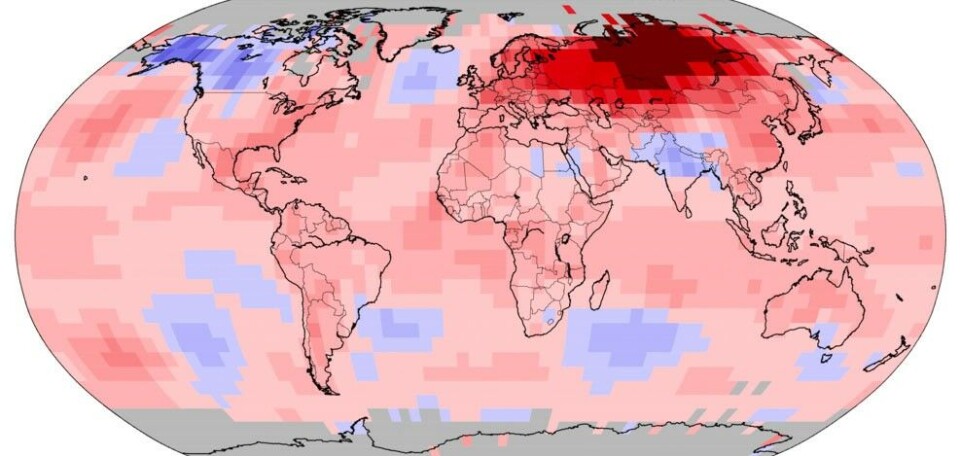
Red alert for northern Siberia as heat shocks threaten life on tundra
New temperature maps for the endless stretches of Russian Arctic lands bear witness of unprecedented warming.
April 2020 follows in the wake of a number of months with record-beating temperatures in northern Siberia. The remote tundra lands located along the Arctic Ocean are now among the regions of the world with the quickest warming.

Maps from the U.S National Oceanic and Atmospheric Administration show deviation from normal temperatures of more than five degrees Celsius over major parts of Siberia.
The visualizations depict average temperature departures in the first four months of 2020 with respect to a 1981-2010 base period.
Nowhere else on the globe are the same kind of dark blood-red deviation as in Siberia.
The same maps are made available by Russia’s Meteorlogical Service, Roshydromet.
Five degrees warmer
The trend has been going on for many years. The latest climate report by Roshydromet says that average winter temperatures along the Northern Sea Route, the waters located along the country’s Arctic coast, have increased by about 5 degrees since the 1990s. And the warming is most significant in the areas around the Kara Sea, the report reads.

The extraordinarily heat continues into spring. Temperature maps from Roshydromet show that another heat wave in mid-May swept over the region. In parts of northern Siberia, including the remote Arctic peninsulas of Yamal, Gydan and Taymyr, the average temperature on the 23rd May were as much as 16 degrees Celsius higher than normal.
The warm weather and early spring has created a record-early ice break-up of several of the great Siberian rivers, among them the Yenisey.
At the same time, the high temperatures have prepared the ground for unprecedentedly early wildfires. Authorities in the Yamal-Nenets region inform that they are already combating as many as seven fires.
Big change on tundra
The high temperatures have a major effect on ecosystems in the region. Researchers from the Tomsk State University have over the last years discovered that a big number of lakes on the Yamal-Nenets tundra have turned into wetlands.
“Normally, the formation of a drained lake is a pretty extensive and gradual process that takes several decades,” says head of research project Sergey Loiko. “But in this case, everything happens several ten times quicker,” he explains.
When a research team from the university was in the region in 2016, a lake disappeared in just few weeks, the university writes on its website.
The year 2016 is so far the warmest on record. But the following years have been only slightly colder. According to Roshydromet, 2019 was the second warmest year in the Arctic since measurements started in 1936.
The higher temperatures are accompanied by rapid growth of vegetation and greening of the region. This trend is very clear for indigenous peoples in the area, the researchers say.
Over the last decades they have seen a significant change of local bio diversity, the appearance of grass and new kinds of animals and insects.
Expansion of industry
The Arctic warming is evident also for the Russian shipping industry that over the last years has been able to make it across Arctic waters easier than any time before.
Supported by the lighter ice conditions in the area, ships in 2019 transported 31,5 million tons of goods on the Northern Sea Route, an increase of almost 60 percent from the previous year.
On 18th May, LNG carrier “Christophe de Margerie” set out from Arctic seaport Sabetta in Yamal with course for the eastern part of the Northern Sea Route. The eastbound voyage on the route is this year’s first of its kind and comes more than a month earlier than the previous years.
Few days later, the carrier was accompanied by sister ship “Vladimir Voronin”, that now is entering melting Arctic sea ice with course for China.
In these unsettling times, the Barents Observer needs your support more than ever. If you like what we’re doing, please consider making a donation. Your financial contributions, however big or small, will help keep our independent news coming from the north, about the north.
From Norway you can VIPPS: 105792
















